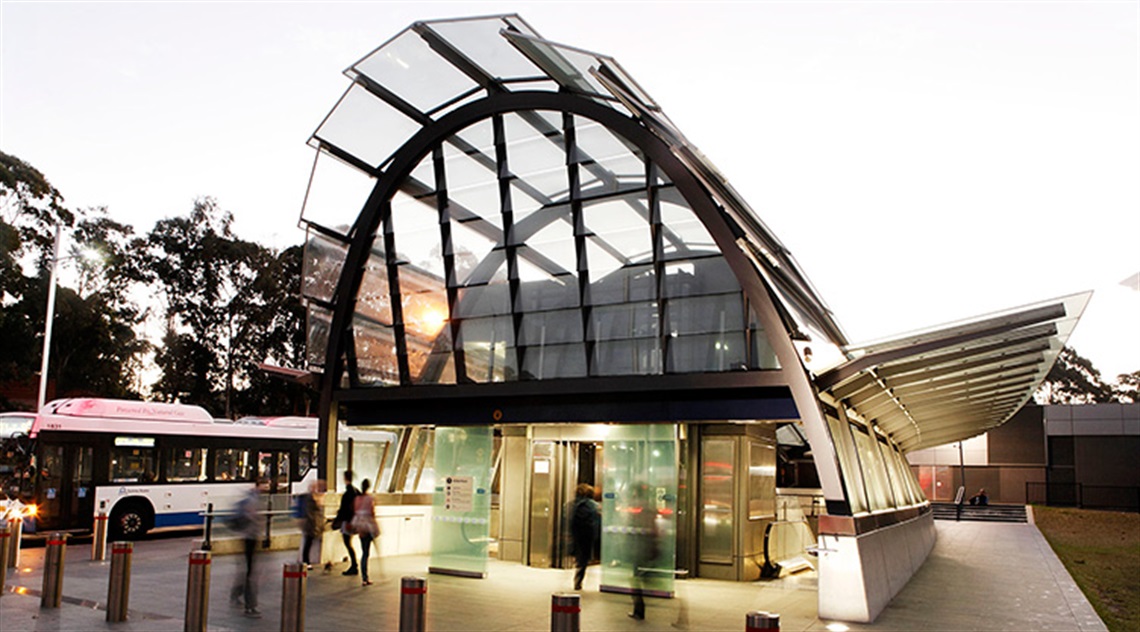
The City of Ryde has developed an Integrated Transport Strategy (ITS) that looks at the challenges faced by our city, and presents actions that will guide future transport planning and development to deliver a sustainable, integrated network with better active transport options.
The City of Ryde ITS aims to maximise opportunities to increase public transport and walking and cycling use, reduce the frequency and length of trips on the transport system, improve local traffic access and parking and provide a framework for a more cohesive transport network out to the year 2031.
It provides a policy framework for transport and operational decisions within the City of Ryde between 2016 and 2031, as well as a foundation for more detailed investigations into specific issues or centres. It is intended to be a live document that is regularly monitored and reviewed.
What is the ITS?
- The City of Ryde Integrated Transport Strategy (City of Ryde ITS) provides a framework to plan for an integrated transport network to support the growth in residents and jobs in the City of Ryde.
- The ITS is an update to Council’s existing Integrated Land Use and Transport Strategy, which is now nearly 10 years old.
- It is shaped around five key policy positions relating to:
- Integrated land use
- parking
- active transport (walking and cycling)
- public transport
- roads and freight.
Why is it needed?
- The ITS details the significant growth that will occur in the City of Ryde in the coming decades. For example:
- The population will grow from 113,000 people in 2011 to 153,000 people in 2031.
- Both Macquarie Park and Macquarie University will be home to a substantial increase in workers and students.
- Top Ryde, Meadowbank, North Ryde and Macquarie Park will see the biggest population increases.
- Changes in the way centres will be structured in the future will impact transport – requiring, for example, better public transport in higher-density areas and more intense land uses around public transport hubs.
- With this growth comes more trips, and current patterns are not sustainable.
- For example, although the proportion of people travelling to work by car to Macquarie Park has decreased, the current proportion of 75% of trips to the centre by car would equate to an additional 9,000 peak hour vehicle trips per day in the future.
- There are few opportunities for new roads or additional lanes; instead, the ITS looks at how to alleviate congestion in specific areas (pinch points) and what is needed to encourage people to choose options other than the private car to travel in the LGA.
- The ITS also considers emerging technologies that are being used in other cities around the world, identifying how and where these technologies could work in City of Ryde.
What does it mean for people who live in Ryde?
- The ITS aims to increase the ability for people to take public transport, or walk or cycle.
- It aims to reduce the length of trips and the time it takes to travel to places.
- Its policies will make it easier for people to get around local areas and will provide a clearer framework for parking.
- A better walking and cycling network will connect existing paths and will be logical, safer and easier to use.
- Bus trips will be more direct.
What does it mean for business and employment?
- With the expected growth in jobs in Macquarie Park, the ITS will make the centre easier to access, supporting the centre’s reputation and attractiveness and its role as a significant employment centre for the entire Greater Sydney area.
- It will also make business movements, such as freight movements, more efficient and productive thanks to reduced travel times.
- Investment in public transport will support new development, creating an uplift in the value of land around public transport hubs.
What does it mean for Council?
- The ITS aligns with existing frameworks, strategies and agreements, such as the overarching NSW Long Term Transport Master Plan, the National Partnership Agreement and local planning instruments such as the Local Environmental Plan and Development Control Plan.
- As a policy framework for transport and operational decisions within the LGA, the ITS will be a foundation for additional investigations into specific transport issues.
- It will be a live document, subject to regular review and monitoring, with both an annual report and five-yearly (major) report on achievements and outcomes.
- Funding will be required from across different sources – beyond Council funding, the actions of the ITS will require NSW Government assistance, as well as investigation into funding mechanisms that respond the uplift in value generated by transport infrastructure and well as the impacts on the transport network of new development
HAVE YOUR SAY
Submissions can be made by e-mail or post.
Written submissions must be clearly marked as ‘Integrated Transport Strategy (2016-2031)' and will be received up until Thursday 22 June 2016.
They can be sent to:
Privacy Notification
Personal information collected from you is held and used by Council under the provisions of the Privacy and Personal Information Protection Act 1998. The supply of information is voluntary, however if you cannot provide, or do not wish to provide the information sought, Council may be unable to process your application or request, or consider your submission. Please note that the exchange of information between the public and Council, may be accessed by others and could be made publicly available under the Government Information Public Access Act 2009 (GIPA Act). If you require further information please contact Council’s Customer Service Centre on 9952 8222.